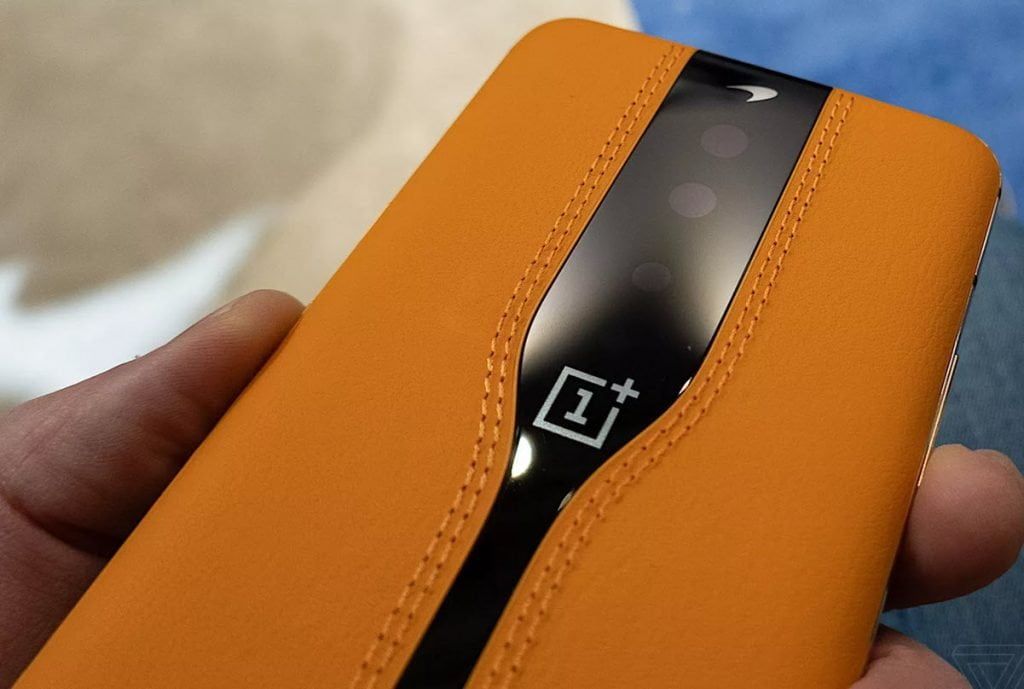We love concept ideas especially when companies come out to show what they are working on behind the scene– a concept phone from OnePlus, appropriately called the OnePlus Concept One is one of these. So what makes its unique? It is a true concept device in that it may never be released, but it exists to demonstrate a single feature. The glass can become opaque to hide the cameras on the back of the phone. Nice, isn’t it?
According to all the YouTube videos and demos, this technology on the OnePlus Concept One phone actually works. The camera lenses are completely occluded under a bare strip of dark glass until you turn the camera on. Three holes quickly appear so that you can take photos. When the camera app closes, the glass goes dark again. Bada bing bada boom.
The only other unique feature on this concept phone was the fact that it had “Papaya Orange” stitched leather on the back, inspired by McLaren, and PVD-treated aluminum to make it look shiny and gold.
Read More: The OnePlus 7 Pro unveiled: Great display screen, three cameras and more
With this feature on the OnePlus Concept One, the company argues that this technology could make it a little more acceptable to sell a phone with four or five or more cameras on the back. But at the end of the day, the point of this concept phone is the same as many concept cars: to look cool and convince you that the company that made it can do cool things.
How to turn on ND mode on the OnePlus Concept One

To turn it on, you need to enter into the OnePlus camera’s Pro mode. Once you’re in Pro mode, you’ll find a toggle button labeled ND8. ND filter standard Neutral Density filter. Tap it and you should get the equivalent of a three f-stop reduction — assuming OnePlus’ notation is accurate to the effect. This is particularly useful for shooting video in bright conditions, but it’s a neat trick to capture some photo effects as well.
This will make the shot darker on the OnePlus Concept One, but we can’t vouch for how much. We hope in the future they will make the ND filter was variable, though, instead of being a single toggle to ND8.
How it works
As for how the technology actually works, it’s a pretty standard electrochromic glass setup. There are two layers of glass with two more conductive layers between them and the actual electrochromic layer in the middle. You run a charge through the conductive layers and it changes the opacity. All this was cramped into the OnePlus Concept One phone.
The company says it was inspired by the electrochromic roof on the McLaren 720S — the company has been partnering with McLaren to brand top-flight OnePlus phones for a while. OnePlus says the real innovation in this glass is both how thin and how quick it is. It’s 0.35mm thick and it can switch from opaque to transparent in 0.7 seconds. Both are apparently unmatched by other EC glass.
Because it’s so thin, OnePlus also used specialized non-polar glass particles between the layers to add structural support of the OnePlus Concept One phone, taking care to only place them around the camera holes so they wouldn’t distort the image.


